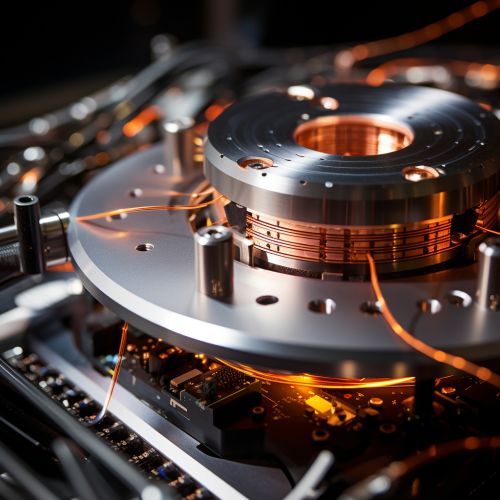Quantum Computing with Quantum Optomechanical Systems under Quantum State Transfer
Introduction
Quantum computing is a rapidly developing field that leverages the principles of quantum mechanics to perform computational tasks. A key component of quantum computing is the quantum state transfer, which involves the transfer of quantum information from one location to another. This process is crucial for the operation of quantum computers and quantum communication systems. Quantum optomechanical systems, which couple light and mechanical motion at the quantum level, have emerged as promising platforms for realizing quantum state transfer.


Quantum Optomechanical Systems
Quantum optomechanical systems are physical systems that exploit the interaction between light and mechanical motion at the quantum level. These systems typically consist of a micro-mechanical resonator coupled to a high-finesse optical cavity. The resonator, which can be a tiny mirror or a nanoscale beam, is set into motion by the radiation pressure exerted by the light in the cavity. This interaction leads to a coupling between the optical and mechanical degrees of freedom, which can be exploited for various quantum information processing tasks.
Quantum State Transfer
Quantum state transfer is a fundamental operation in quantum information processing. It involves the transfer of quantum information, encoded in the state of a quantum system, from one location to another. This process is essential for the operation of quantum computers, as it enables the distribution of quantum information across the different parts of the computer. Quantum state transfer is also crucial for quantum communication, where it allows for the transmission of quantum information over long distances.
Quantum Computing with Quantum Optomechanical Systems
Quantum optomechanical systems offer a promising platform for realizing quantum computing. The coupling between light and mechanical motion in these systems can be exploited to perform quantum gates, the basic building blocks of a quantum computer. Moreover, the ability to control and manipulate the mechanical motion at the quantum level opens up new possibilities for quantum computing.
One of the key advantages of using quantum optomechanical systems for quantum computing is the potential for high-speed operation. The mechanical resonators in these systems can oscillate at very high frequencies, allowing for fast quantum gate operations. Furthermore, the strong coupling between light and mechanical motion can enable efficient quantum state transfer, which is crucial for the operation of a quantum computer.
Challenges and Future Directions
Despite the promising prospects, there are several challenges that need to be addressed in order to realize quantum computing with quantum optomechanical systems. One of the main challenges is the decoherence of the mechanical motion, which can lead to the loss of quantum information. Another challenge is the difficulty in achieving strong coupling between light and mechanical motion, which is necessary for efficient quantum state transfer.
Future research in this field will likely focus on overcoming these challenges and further developing the capabilities of quantum optomechanical systems for quantum computing. This could involve the development of new materials and designs for the mechanical resonators, as well as the exploration of new methods for enhancing the light-mechanical coupling.
